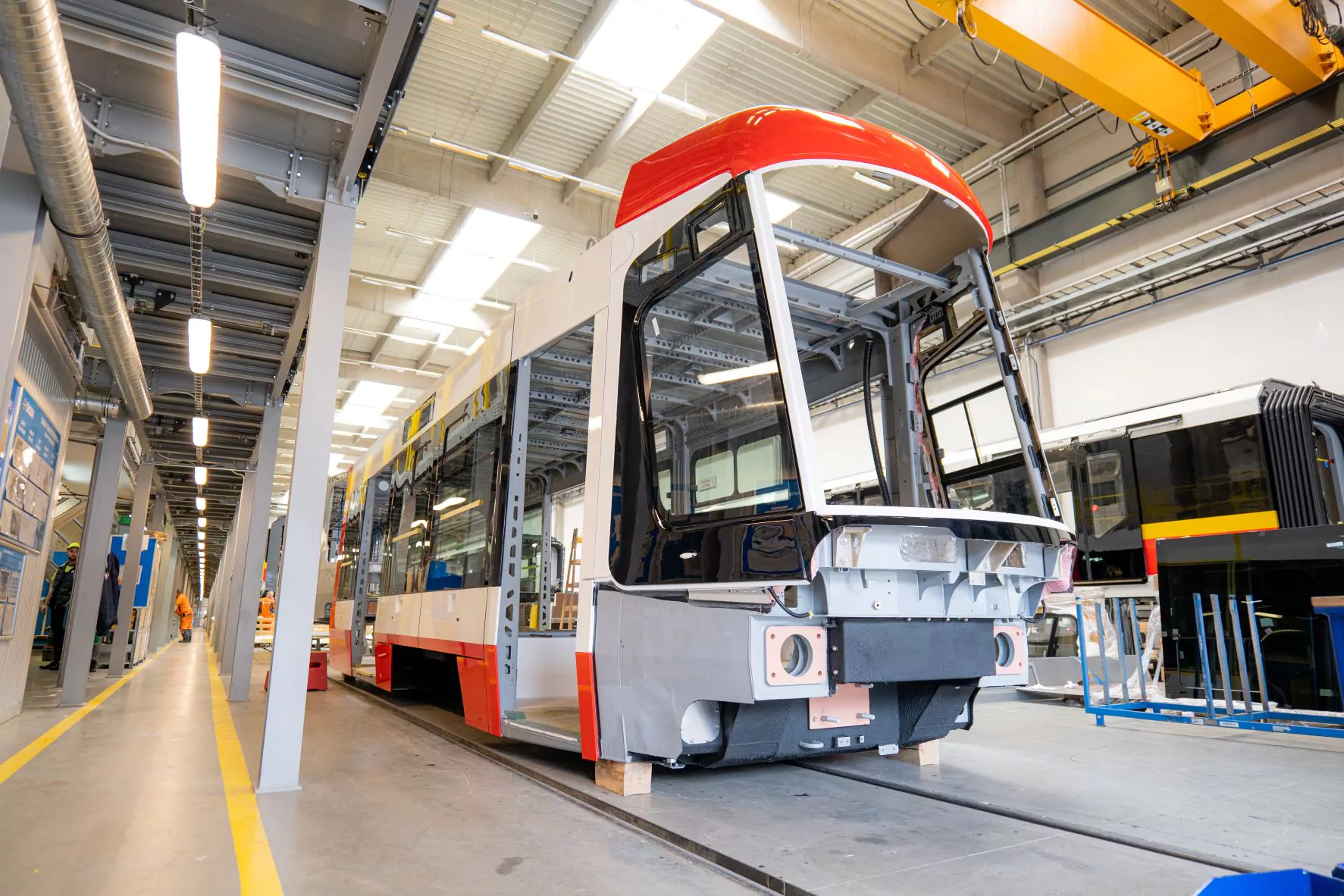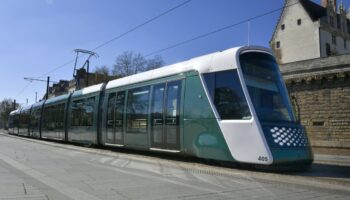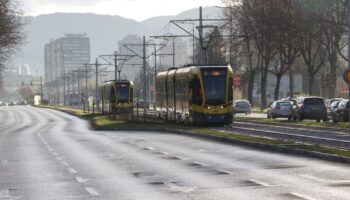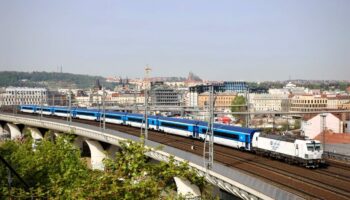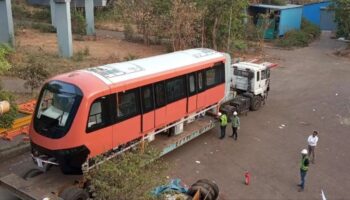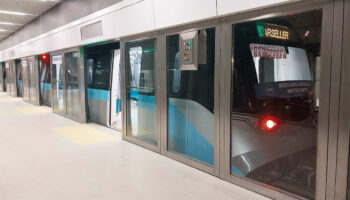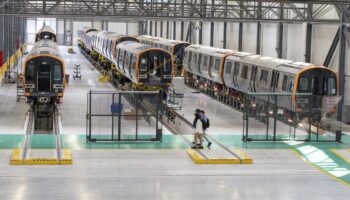Czech Republic: In 2022, Skoda Group celebrated the 25th anniversary of producing its first tram, Astra. It was in the middle of the crisis that gripped the national industry when Skoda started building tram cars. Today, its portfolio includes 475 LRVs in 13 cities in 4 European countries, with options under existing contracts. Skoda Group introduces new technologies: the company has recently presented a unique tilting technology and is developing an unmanned LRV.
From the history of the tram industry
Before Skoda, the major tram manufacturer in the Czech Republic was ČKD. It was incorporated in 1927 by the merger of two small companies that produced machinery for hydroelectric power plants, mines, and the food industry. Following nationalization after World War II, ČKD launched the manufacture of other products. Its subsidiary company Tatra, for example, took up the production of tram cars. In the Guinness World Records book, one can find its T3 as the most widely produced tram platform and ČKD as the major tram builder in the world. From 1961 to 1997, 13.7 thousand tram cars were produced, 11.3 thousand of them supplied to the USSR. After the collapse of the Soviet Union, the company started losing markets in the Central and Eastern Europe. Soon, in 1994, the Czech government privatized ČKD, but the company went bankrupt, so in 2001, Siemens Mobility took possession of Tatra’s production facilities.
A new player entered the market
The leadership in LRV construction in the country came to Skoda Plzen. In 1922–1954 the manufacturer supplied the local – and only the local – tram market with electric motors, control panels, and other components. In the early 1990s, Skoda Plzen regained competence in LRV electric motor production and offered its products to major manufacturers in Portugal, Germany, and USA.
To build rolling stock, a new subsidiary, Skoda Dopravní technika, was established in 1995. The new company brought one-car Skoda 01T and Skoda 02T to the market. It wasn’t something brand new: they upgraded T3 with modern electric equipment and changed the interior. The Plzen and Liberec streets saw 26 01Ts and 20 02Ts, correspondingly.
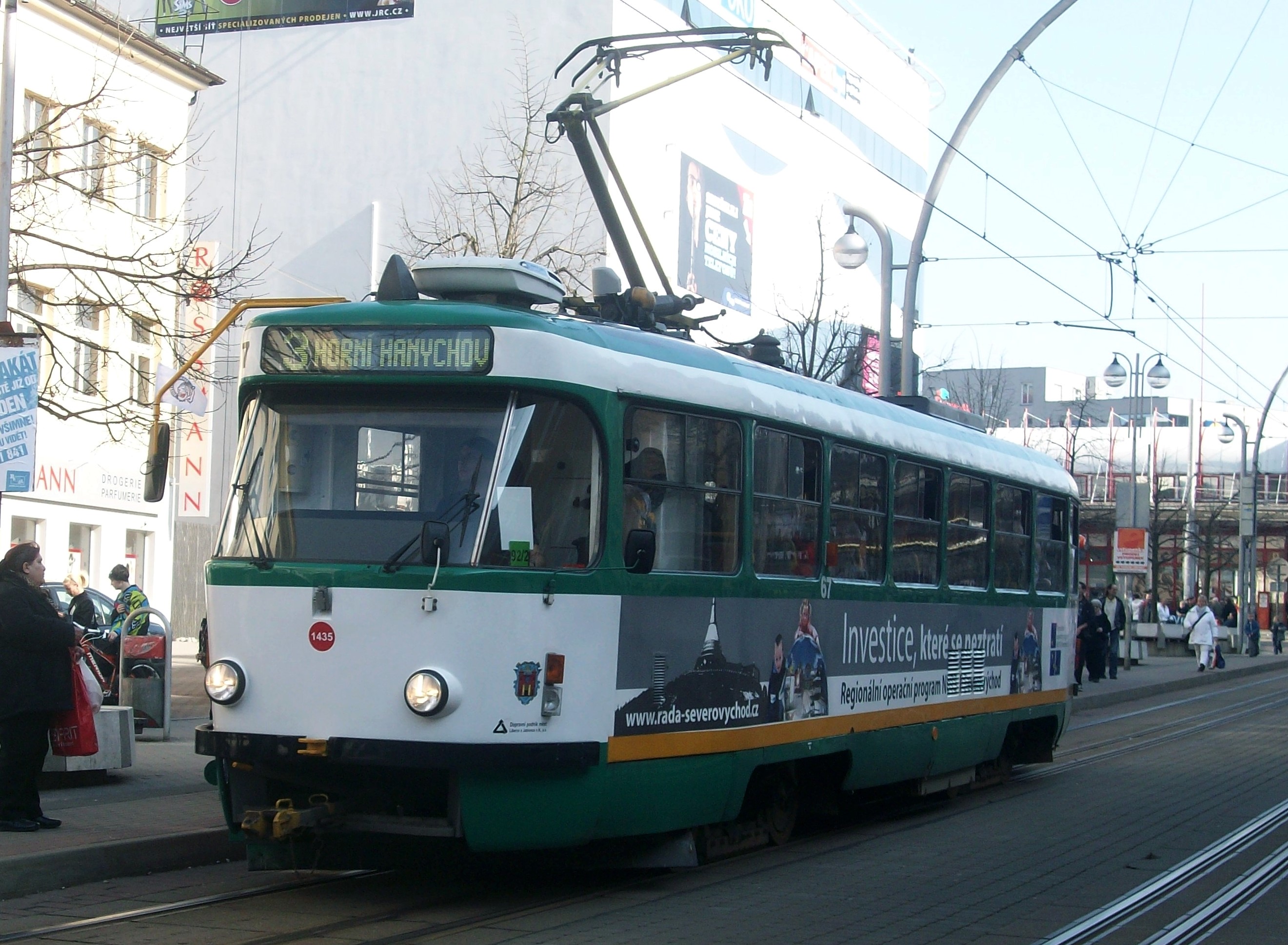 ČKD’s T3 upgraded by Skoda and known as Skoda O2T in Liberec 2012. Source: wikipedia.org
ČKD’s T3 upgraded by Skoda and known as Skoda O2T in Liberec 2012. Source: wikipedia.org
The first Skoda tram created
At the same time, the company was developing its own tram. The main burden of designing a new LRV was on Inekon Group, a Czech company partnering with Skoda in a joint venture from 1996 to 2001. Its staff was quite strong thanks to many engineering and design experts who came from ČKD that was suffering losses. Skoda, in turn, was entrusted with the assembly of two prototypes at its Plzen plant, and, together with Elin EBG, Austria, supplied electric equipment for them.
The first LRV, Astra 03T, was introduced at the International Engineering Fair in Brno 1997. It was a three-car partially low-floor LRV with two bogies. The middle low-floor car had the floor height of 350 mm, and others, 780 mm. Placing electrical equipment on the roof allowed a regenerative braking system. The running gear had four 85 kW asynchronous motors, and LRV could reach 70 km/h. There were four doors on the right side: two double doors in the middle car, and one single door in each head car. Astra 03T accommodated 155 passengers, 42 of them seated.
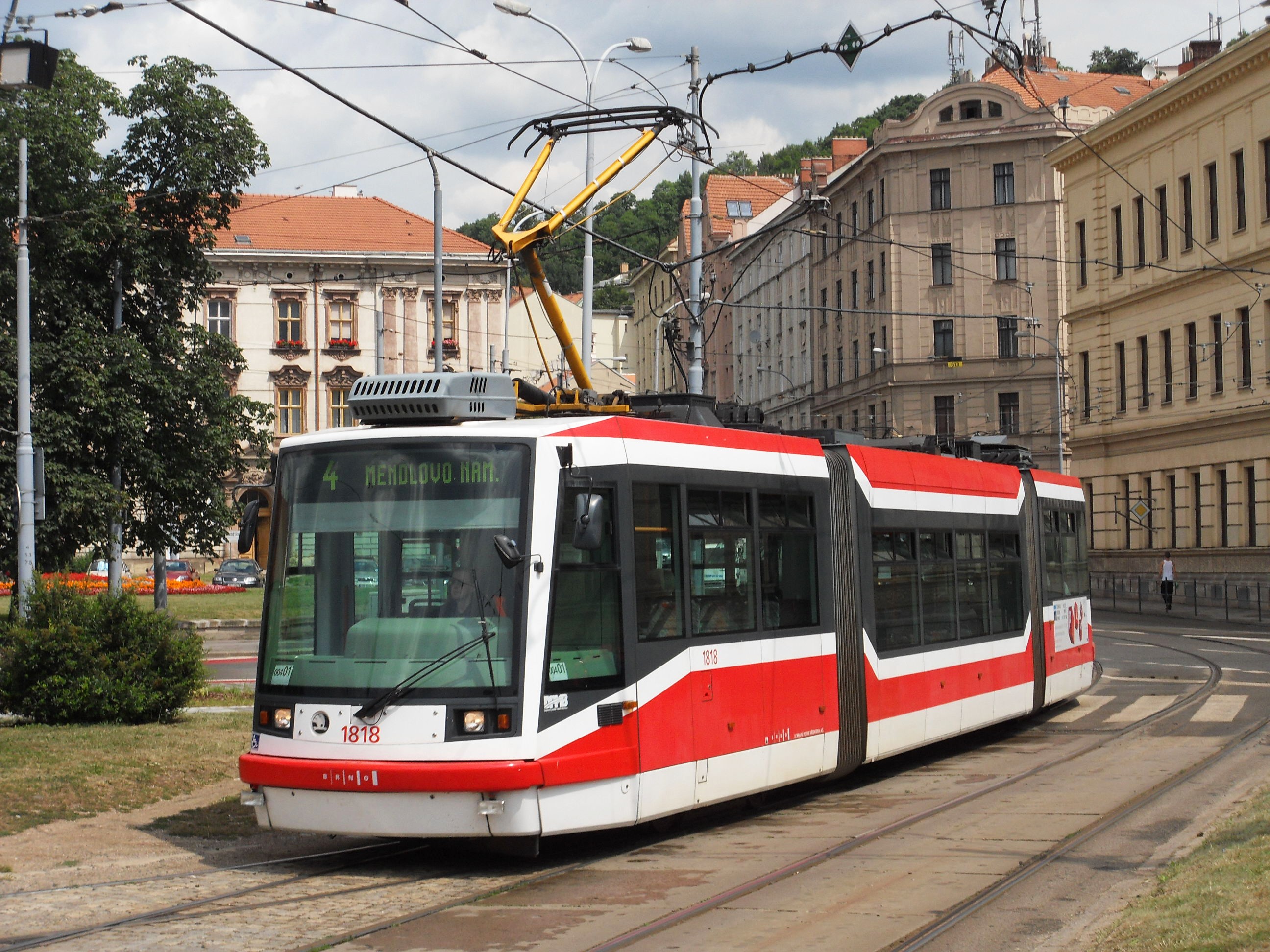 Astra 03T, first Skoda’s tram, in Brno, 2011. Source: wikipedia.org
Astra 03T, first Skoda’s tram, in Brno, 2011. Source: wikipedia.org
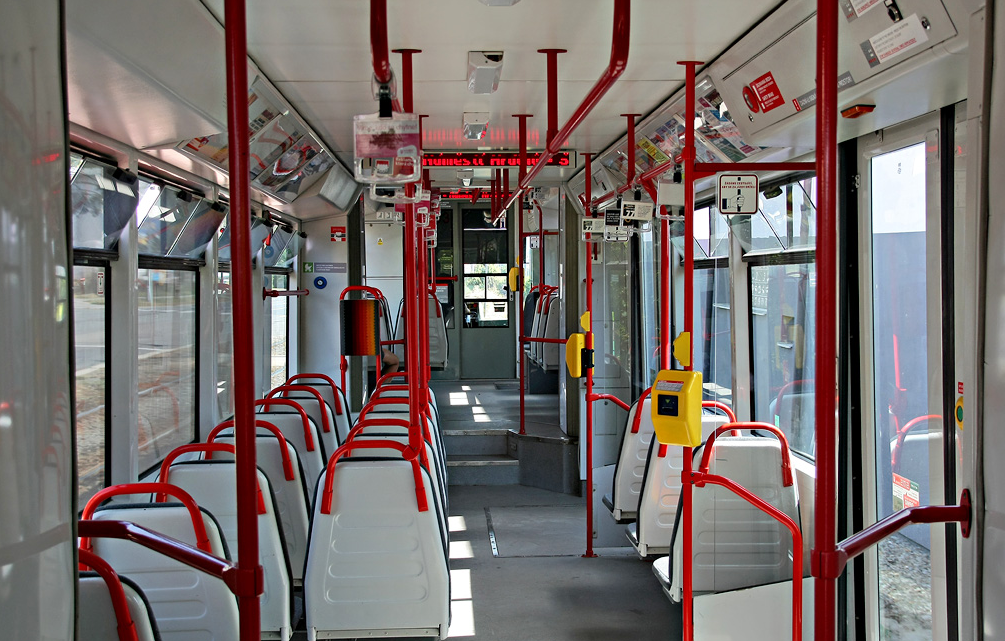 Cabin of Astra 03T. Source: mzk804/phototrans
Cabin of Astra 03T. Source: mzk804/phototrans
Between 1997 and 2005, Skoda produced 48 Astras of various modifications for Czech cities, and 10 bidirectional ones for Portland and Tacoma, US. It is worthy of note that after 2001 together with DPO, Ostrava’s urban operator, Inekon was building Trio LRVs, which essentially copied Astra.
The tram platform developing
To hold its market share, after exiting the joint venture with Inekon, Skoda developed a new LRV family in 2003. Five-section Vectra 05T did not go into mass production but became a prototype for Elektra family. From Astra, Vectra 05T inherited two head and two middle cars with a minor upgrade, and one more middle car was designed from scratch. The second and fourth low-floor cars used two fixed bogies. The floor height of the head cars was 780 mm and of the middle one was 620 mm. Like in Astra, electrical equipment was on the roof. The number and power of asynchronous motors increased: a new LRV had six 90 kW units. 32 metre five-section LRV accommodated 330 passengers and had 66 seats. Until 2014, when the building of Skoda ForCity Plus 30T began, it was the longest tram ever produced in Czechia.
 First Skoda’s five-car LRV, Vectra 05T, in Plzen. Source: mestskahromadnadoprava.wgz
First Skoda’s five-car LRV, Vectra 05T, in Plzen. Source: mestskahromadnadoprava.wgz
With Vectra 05T Skoda tested new solutions, which were later used in other platforms. For the first time, the floor above the wheels was lowered. A tram was equipped with new traction and static converters by Skoda, and a brake system and inter-car gangway bellows by DAKO and BAVO, Czechia. Its body was finished with glued aluminium sheets.
In 2005, the company was rebranded as Skoda Transportation, and built the first five-car Elektra 14T for Prague. Its design was developed by Porsche Design Group. Like in Vectra, two low-floor cars had fixed two-axle bogies. On the right side, there were two double doors in even-numbered cars, one single door at the end of the fifth section, and another single door for a driver. In Elektra 14T, foot control was replaced with hand control with a lever on the left, and that distinguishes this platform from previous models. Slopes of up to 85 ‰ became available for a tram. LRV is equipped with three types of brakes: electro-hydraulic, electromagnetic, and regenerative dynamic ones. Electric motors are of the same power and number as in Vectra.
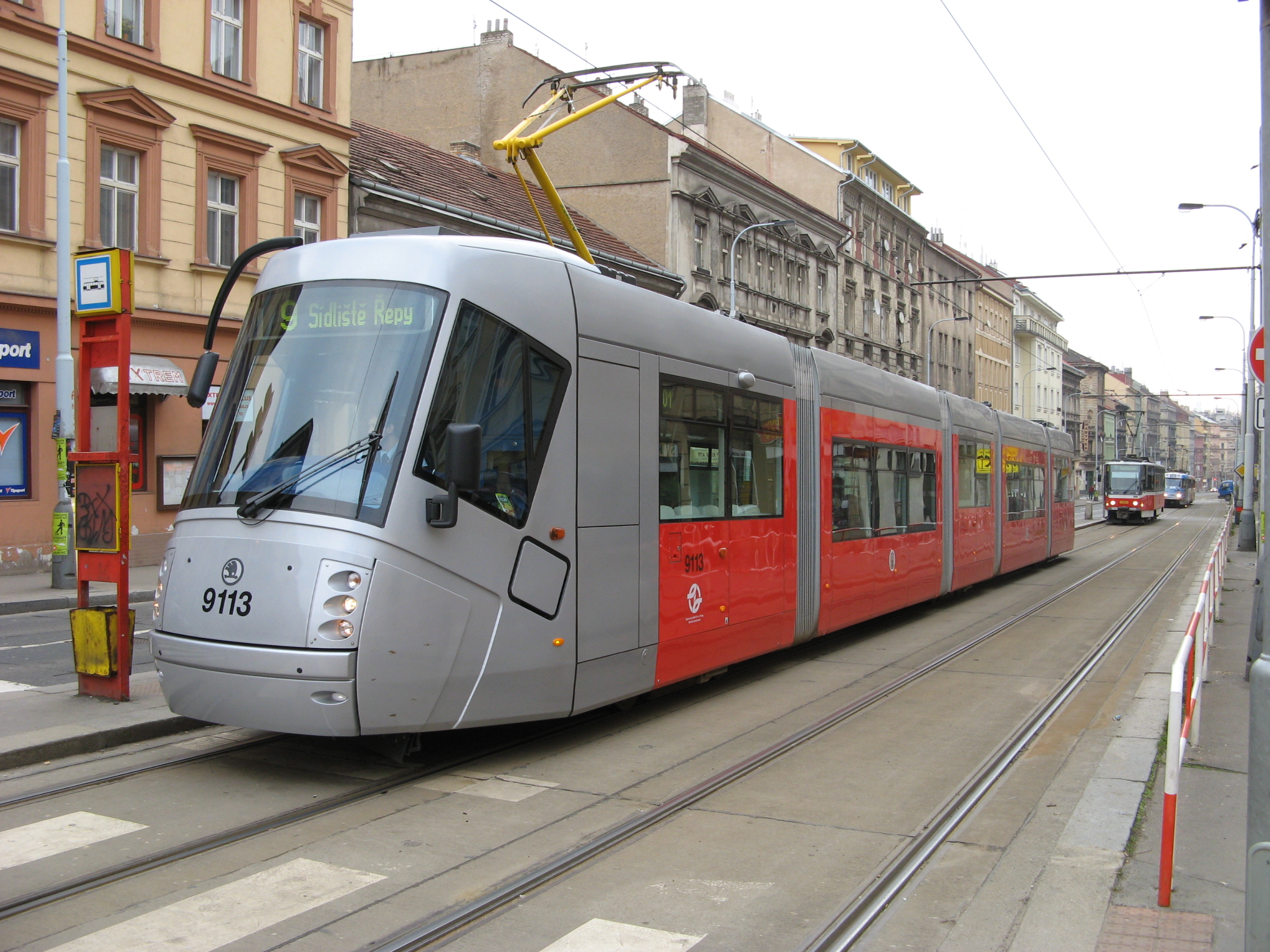 Skoda’s catchy Elektra 14T designed by Porsche in Prague. Source: wikipedia.org
Skoda’s catchy Elektra 14T designed by Porsche in Prague. Source: wikipedia.org
From 2005 to 2009, 60 five-car Elektra 14T trams appeared on Prague streets, but passengers and the operator of the Czech capital were dissatisfied with them. People nicknamed its noisy cabin a “steel plant”. They didn’t like narrow passages between seats, uncomfortable handrails and doors, and lack of air conditioning system. The operator complained about bogies destroying rails on curves.
But all these weak points did not affect the demand for 14T modifications. Brno, Czechia, ordered from Skoda Transportation 49 five-car trams, Wroclaw, Poland, 48 five-car Elektra 16Ts and Elektra 19Ts, and Cagliari, Italy, 9 four-car Elektra 06Ts
The first fully low-floor LRV designed
Elektras were a success both in Czechia and abroad, but Skoda decided not to rest on its laurels and developed a fully low-floor ForCity 15T (also known as ForCity Alfa). So, in 2008 the first ForCity tram was presented, and over the next 14 years, Skoda built 500 LRVs on this platform.
The vehicle was offered in a tender bid for the supply of 250 trams to Prague. Later, Riga, Latvia, ordered the same platform trams with minor modifications. In 2013, the company signed a license agreement with CSR Sifang. Already next year the Chinese company manufactured the prototype of ForCity 15T, and only one year later introduced a new tram, 27T, based on the ForCity Alfa platform.
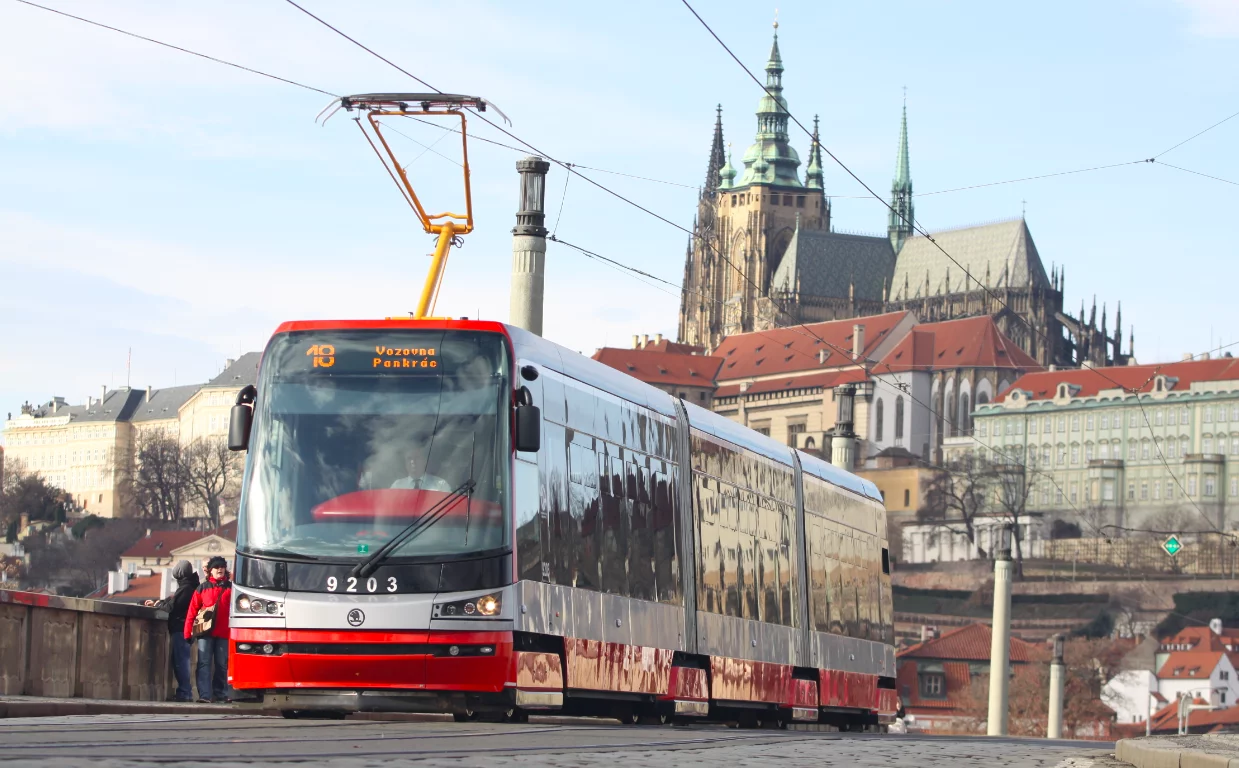 First low-floor Skoda’s tram, ForCity 15T, in Prague. Source: praguemorning.cz
First low-floor Skoda’s tram, ForCity 15T, in Prague. Source: praguemorning.cz
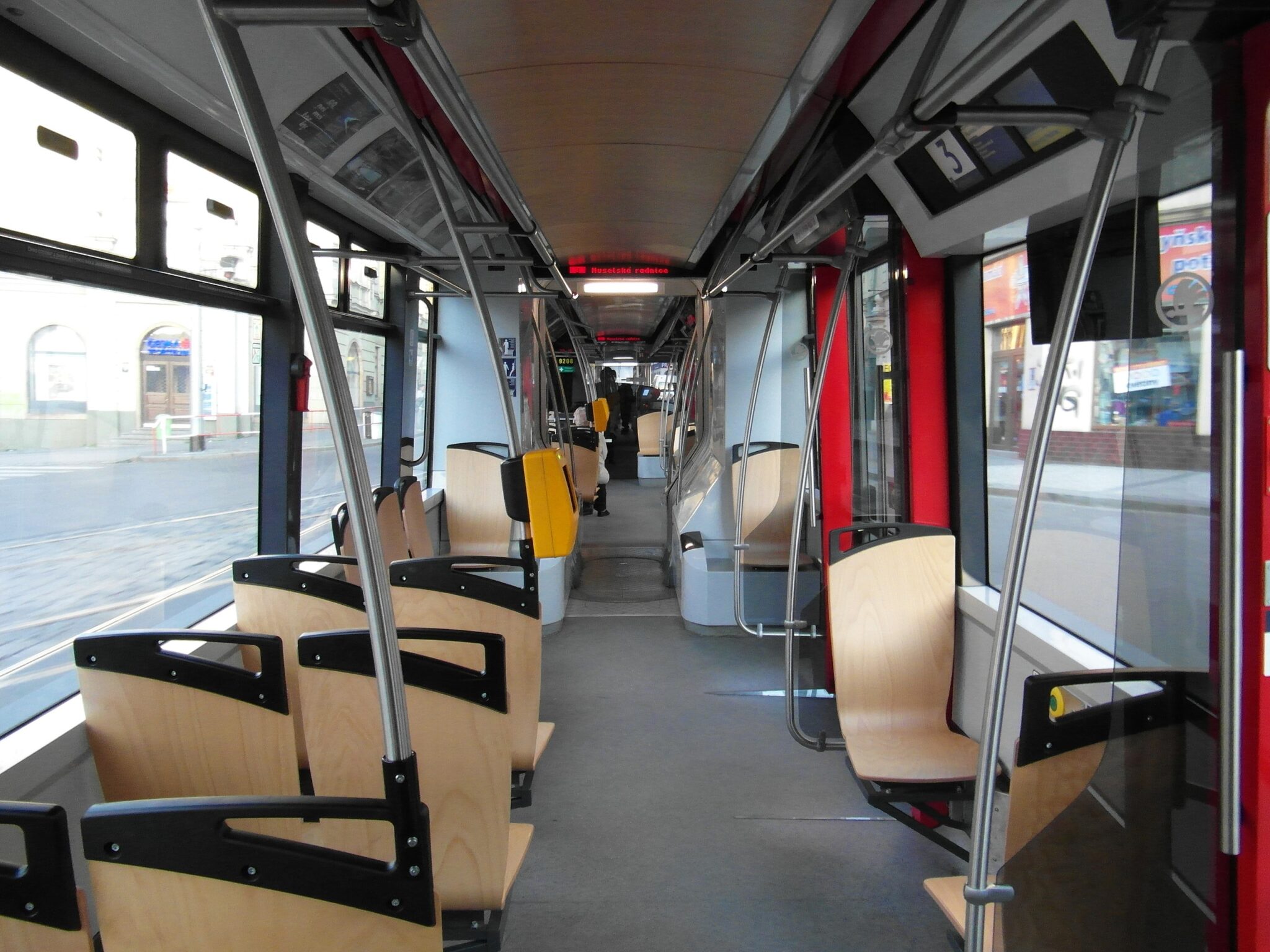 Skoda’s ForCity 15T cabin, Prague line. Source: wikipedia.org
Skoda’s ForCity 15T cabin, Prague line. Source: wikipedia.org
The principal innovation of the low-floor ForCity 15T was a pivoting bogie. With this new unit, a three-car LRV can pass curves with a radius of 15 metres, and a four-car one, of 18 metres. Two pivoting bogies are installed under head cars, and Jacobs bogies are under the articulations of middle cars. 15T has no classic wheelset: each wheel is independent and has a short axle. So LRV now passes curves without wheel spin. Outer and inner wheels are almost identical, and each is driven by a 46.6 kW permanent magnet synchronous motor. Passengers can enter through six double sliding doors; each car has a pair on one side. A driver has his own door. Three-car ForCity Alfa accommodates 189 people and has 61 seats, four-section, 255 people and 79 seats. LRV can reach a maximum speed of 60 km/h in Prague and 70 km/h in Riga.
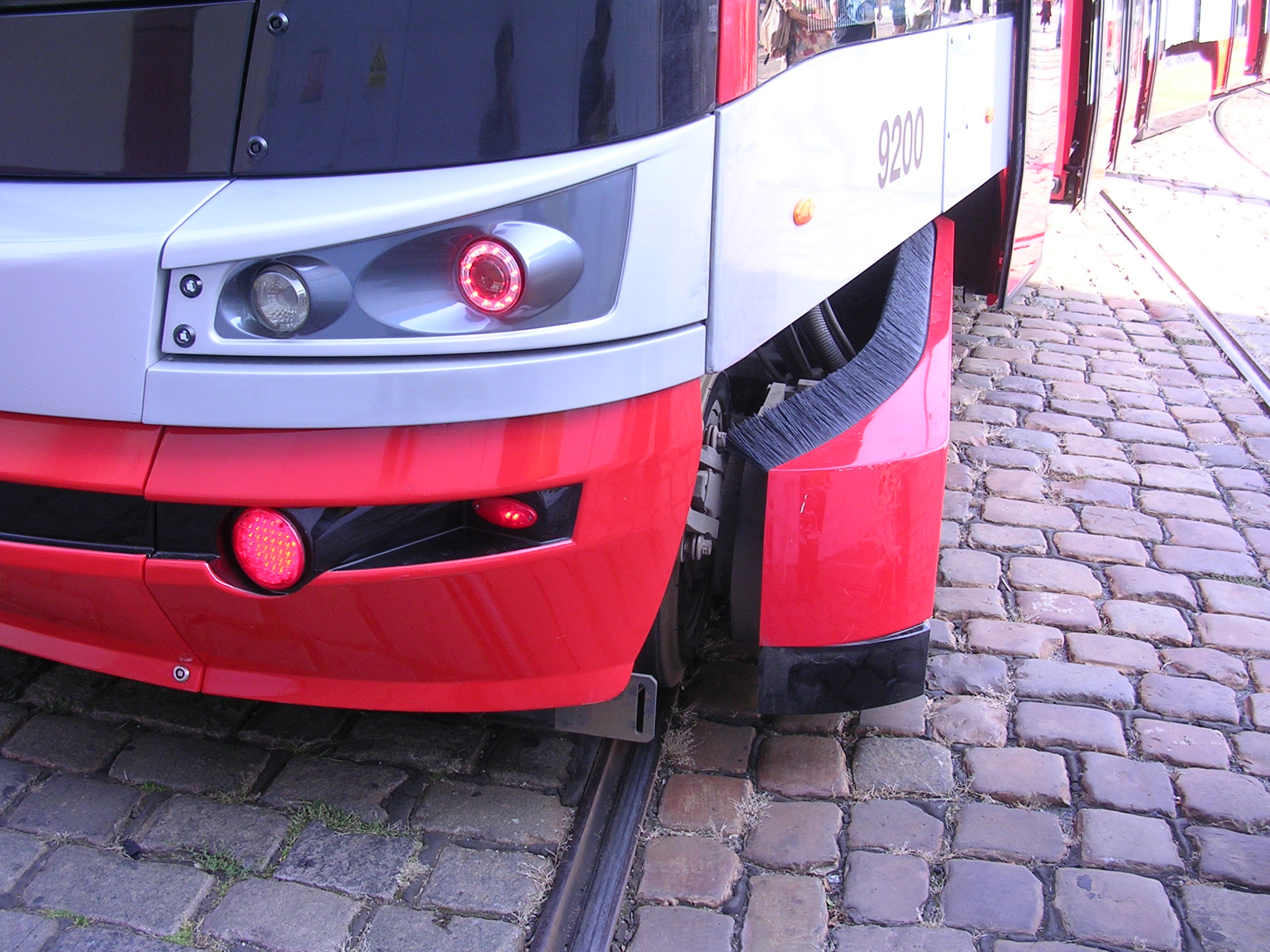 Innovative pivoting bogie for ForCity 15T. Source: wikipedia.org
Innovative pivoting bogie for ForCity 15T. Source: wikipedia.org
More foreign plants
Skoda has several foreign plants. Three of them are in Czech cities: Plzen, Ostrava, and Šumperk. The fourth was acquired from Transtech in Otanmäki, Finland, in 2015. With this plant, Skoda gained the rights to produce rolling stock, including low-floor three-car trams, Artic. The first two prototypes were assembled by Transtech in 2013 under a contract for 40 LRVs for Helsinki. Skoda launched its mass manufacturing after the acquisition, in 2015, and named the new tram ForCity Smart.
The new platform features bogies with independent wheels. Before they were rare in low-floor LRVs. The bogies were developed to comply with the tender documents. Those, in turn, took into account numerous sharp curves and climbs of the Finnish capital. ForCity Smart has four bogies and eight leading axles. Traction converters feed pairs of eight air-cooled 65 kW asynchronous traction motors with bevel gears. Passengers can feel comfortable in a heat-insulated cabin with air-conditioning and double windows. The 27.6 m long LRV accommodates up to 199 passengers and has 74 seats. Its regenerative braking system supplies energy to heat the cabin.
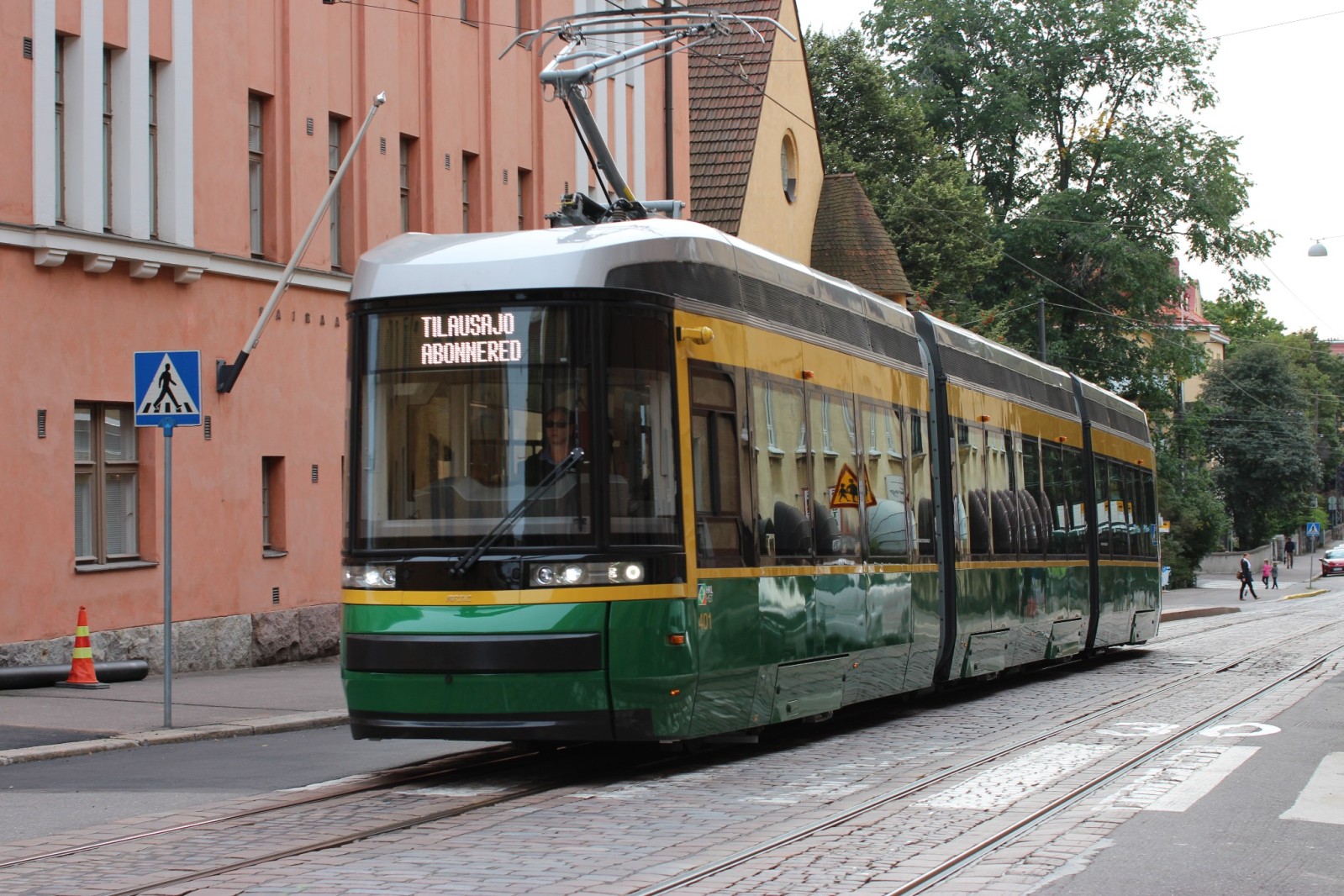 First ForCity Smart tram in Helsinki. Source: wikipedia.org
First ForCity Smart tram in Helsinki. Source: wikipedia.org
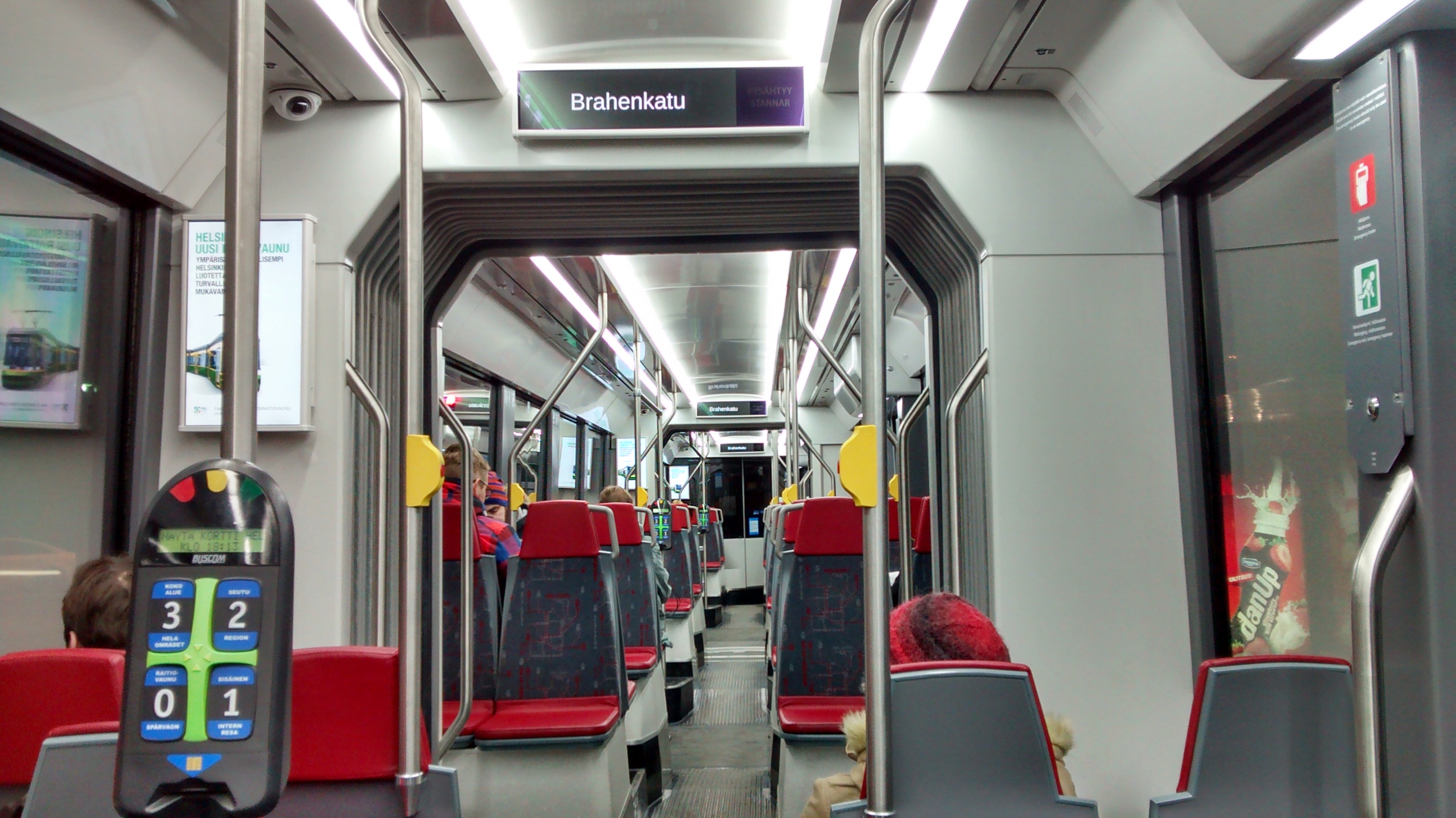 First ForCity Smart tram’s cabin. Source: wikipedia.org
First ForCity Smart tram’s cabin. Source: wikipedia.org
Recently Skoda presented a kneeling system and used it in ForCity Smart X54. This solution came from the automotive industry, particularly, buses. Each door has a button. When pressed, LRV begins to tilt its body lowering the floor level. Then the doors open. So far, it takes about 10 seconds, but Skoda says it’s trying to speed up the process. FYI: public sources do not report whether other LRV manufacturers use this technology.
The company has already supplied 93 ForCity Smarts to Finland and Germany, and this is the most popular model, according to its portfolio. Here are the figures:
- Plzen, Czechia: 22 three-car ForCity Smart 40Ts,
- Ostrava, Czechia: 35 two-car ForCity Smart 39Ts with the option for 5 LRVs,
- Brno, Czechia: 5 three-car ForCity Smart 45Ts with the option for 35 LRVs,
- Rhein-Neckar-Kreis, Germany: 80 three-car ForCity Smart 36Ts (30–60 metres long), with the option for 54 LRVs,
- Land Brandenburg, Germany: 35 three-car ForCity Pluses with the option for 6 LRVs,
- Bonn, Germany: 26 three-car ForCity Smart 41Ts with the option for 12 LRVs,
- Bratislava, Slovakia: 30 five-car ForCity Pluses with the option for 10 LRVs,
- Helsinki, Finland: 29 five-car ForCity Smart Artic XLs and 23 five-car ForCity Smart Artic X54s,
- Tampere, Finland: 8 three-car ForCity Smart Artics with the option for 38 LRVs.
LRV sales territory of Skoda Group Source: Skoda Group/youtube
According to SCI Verkehr, in 2020-2022, the Skoda Group accounted for 3% of the global LRV building market. By now, the company has supplied its trams to 19 cities in several countries: Prague, Plzen, Brno, Ostrava, Olomouc, Most in Czechia; Bratislava in Slovakia; Chemnitz, Schöneiche in Germany; Helsinki, Tampere in Finland; Portland, Tacoma in USA; Cagliari in Italy; Wroclaw in Poland; Eskişehir, Konya in Turkiye; Miskolc, in Hungary; and Riga in Latvia.
A stake on urban transport technologies
In the summer of 2022, Skoda Transportation changed its name to Skoda Group, and it was the third time in its history. By 2029 the company plans to completely abandon the word “Skoda” in its name. A relevant agreement was signed by PPF and Volkswagen Group. The former owns Skoda Group, and the latter, Skoda Auto. The parties expect that the name change will put an end to the “frequent confusion” because people are convinced that the Skoda brand means only cars. For example, a 2021 survey for Skoda Group showed that 93% of respondents associated the brand Skoda with cars.
Since December 2022, the company has had five directions: Rolling stock, Digital, Components, Service, and Buses. Before Rolling stock and Digital were a single division. Now Digital has a separate strategy up to 2030 and will begin its implementation with the creation of transport management software, predictive analytics solutions, and other information systems. With Czech O2, INTENS Corporation, and West Bohemia University, it will develop a fully autonomous LRV.
The company’s financial results confirm that Skoda Group is now focused on digital technologies. In 2021, the company spent €81.1 mln (more than 13% of its revenues of €604.4 mln) on R&D. Compared to 2020, this line item increased by 20.3%. But 2020 expenditures (€65.4 mln) were also almost 1.5 times higher than in 2019.



